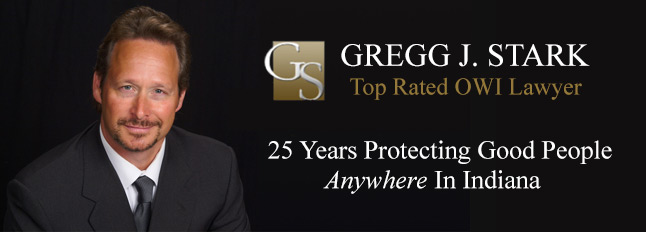The relatively recent tragedy in Michigan stemming from the killing of multiple innocent civilians, allegedly by an Uber driver, has raised many concerns in regard to the safety of this new emerging avenue of public transportation.
As an individual providing counsel to those seeking my suggestions as to the safest transportation alternatives where a designated driver is not available, I have raised my increasing concerns at to the present polices and practices of “for profit” transportation services such as Uber.
Whether occurring in Michigan or in our own state, national policies and practices as to the screening and continued monitoring of drivers by private outfits controlling the transport of citizens can affect us all.
Notably, an Indiana resident has been interviewed as the last Uber passenger of this accused murderer who remembers actually conversing with the driver about the killings as the two spoke of the media attention the slayings had received.
This passenger like many of us perhaps felt insulated from harm in being conditioned to believe that a professional driver affiliated with Uber could somehow never be the perpetrator of such wrongdoing. Yet, we all must wake up to the realities that simply turning control of our transportation to a private driver is never without risk.
Through the continued advertising of this company as an outlet for unemployed individuals or those seeking to supplement an income, the potential ranks of Uber drivers could rise to an appreciable rate in the near future.
To what extent Uber will focus needed financial resources to the proper screening of potential drivers affiliated with this company is an issue for another discussion. For the sake of this article, the reality exists that at the present time individuals considering use of alternative avenues of public transportation such as Uber must take note of present realities.
Those of us who have grown up with a public transportation system where bus, train or taxi cab drivers were regulated in some fashion by government at least had reason to believe that safety considerations were paramount when applied to the hiring and continued retention of motor vehicle operators.
Now there has become serious questions as to whether public officials have increasingly abdicated its role as a safety regulator to the increasing power and influence of private corporations.
With an allowance for “for profit” private concerns to operate legally, companies such as Uber are presently engaged in mass advertising campaigns prioritizing the accumulation of drivers to its ranks with which to rapidly expand its footprint throughout America. As such, one has reason to question the priority of such companies to take the time necessary to properly screen and monitor drivers it has endorsed to transport the public.
One must recognize that private corporations whose foremost priority is turning a profit will do as little as required to actually ensure that the Uber driver controlling your vehicle is responsible and worthy of your trust.
What has garnered public attention to Uber for this most recent incident in Michigan is the actions of a potential mass murderer, not unlike prior discussions on the potential affiliation of another Uber driver and the killing of an Indiana University student.
Thankfully, the attention focused upon companies such as Uber due to the alleged criminal actions of their affiliated drivers is relatively small compared to the more widespread safety concerns these “for profit” entities pose to those considering using their services.
Although these extreme cases certainly compel needed scrutiny, such discussions have the danger of overlooking the broader implications of just how safe the drivers permitted to drive for Uber are, much less those capable of committing criminal offenses.
Thus far Uber has not satisfied the concerns of many public officials who fear that as the company continues to expand and profit, they will in effect have become to big and powerful to regulate. This could very well be the reason that the dissemination of Uber commercials seeking drivers have become a daily experience we all have listened to.
Once we have integrated into an “Uber” society and have become dependent upon such private outlets for formerly public transportation, safety concerns will become secondary as political contributions to legislators will serve to mute the calls for action to protect the public welfare.
Uber’s present strategy to eliminate its competition has been dangerously effective. By effectively diminishing the use of public taxi cabs I believe its next aim will be to seek to curb usage of buses and trains. Once that happens public convenience will demand drivers; drivers that will be provided by an unregulated mass of citizens with their own individualized motives for seeking to transport people within their personal vehicles.
Refreshingly, I believe that a growing alternative to the dangerous expansion of for profit transportation has become the emergence of available use of on demand public vehicles under the control of city regulated policies.
Throughout the nation cities and municipalities have begun to creatively experiment with new century solutions to public transportation. As the internet generation has grown accustomed to on demand satisfaction of needs at a moments notice, more and more city planners have begun to respond to these expectations with growing success.
For example, throughout the city of Indianapolis people without vehicles can now control their own transportation requirements through on demand vehicles made available within dedicated parking spaces.
I am heartened to observe the empty spaces I continually see indicating that these electric and publicly available vehicles for rent are being utilized. These type of city initiated transportation initiatives are as farsighted as they are wise. Not only are they encouraging the use of clean energy, but they are encouraging the carpool of people familiar with one another to travel in the most safe and financially prudent way possible; both for the benefit of public safety as well as the environment.
In coming months I will be interested in furthering discussion as to the future viability of public transportation and how intelligent programs such as those now being initiated in Indianapolis can represent a safe and cost effective alternative to the compelled use of unregulated strangers for our transportation needs.







